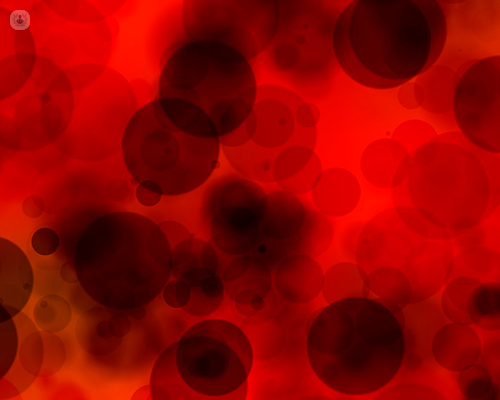

What is it?
Polycythaemia, also known as polyglobulia, is a disease state where you have high levels of red blood cells in your blood, as well as a high concentration of haemoglobin. It is a quite rare condition that mostly affects people older than 60. It can be classified into:
- Primary polycythemias: caused by a birth defect in the production of red blood cells
- Secondary polycythemias: an elevated red blood cell count that is due to other conditions or health issues.
This makes the blood thicker, leading to a disruption in the oxygen flow (low haemoglobin levels) and to an irregular microcirculation (potential complications include thromboembolism and thrombocytosis).

What are the symptoms?
The main symptoms of polycythaemia are:
- weakness
- fatigue
- headache
- itchy skin
- joint pain
- dizziness
- abdominal pain
How is it diagnosed?
Polycythaemia is diagnosed initially with a regular blood test, and a look at your medical history. The diagnosis can be confirmed with a physical examination and a complete blood count (CBC).
What causes it?
The most common causes of polycythaemia are:
- blood transfusions
- a transfusion of cord blood to the baby right after birth
- placental insufficiency, causing a chronic disruption to the oxygenation course to the foetus
- primary polycythaemia can also be caused by inherent factors associated with the production of red blood cells, causing an increase in their level
- secondary polycythaemia can be caused by chronic obstructive pulmonary diseases (COPD, such as pulmonary emphysema, chronic bronchitis), chronic heart diseases, sleep apnoea and pulmonary hypertension
How can it be prevented?
Eating a healthy diet, with plenty of fruit and vegetables (which help thin the blood) and low in red meat and processed meat products, can help prevent polycythaemia. Exercising regularly and taking soya lecithin supplements (which work as blood thinners) can help as well.
How is it treated?
Treatment for polycythaemia largely depends on the underlying cause. Primary polycythaemia can be treated with blood-letting or phlebotomy, alongside with blood thinners to avoid the formation of clots. The treatment for secondary polycythaemia will address the underlying cause.
Which doctor should I talk to?
If you have polycythaemia, you should see a specialised haematologist.
